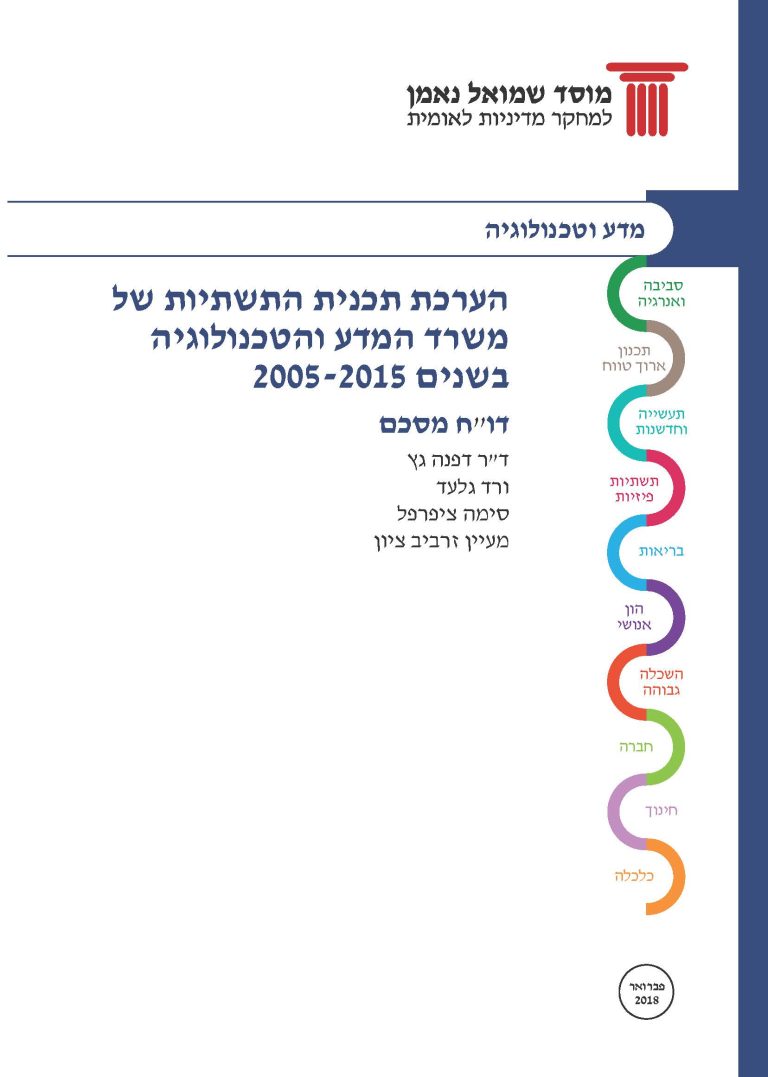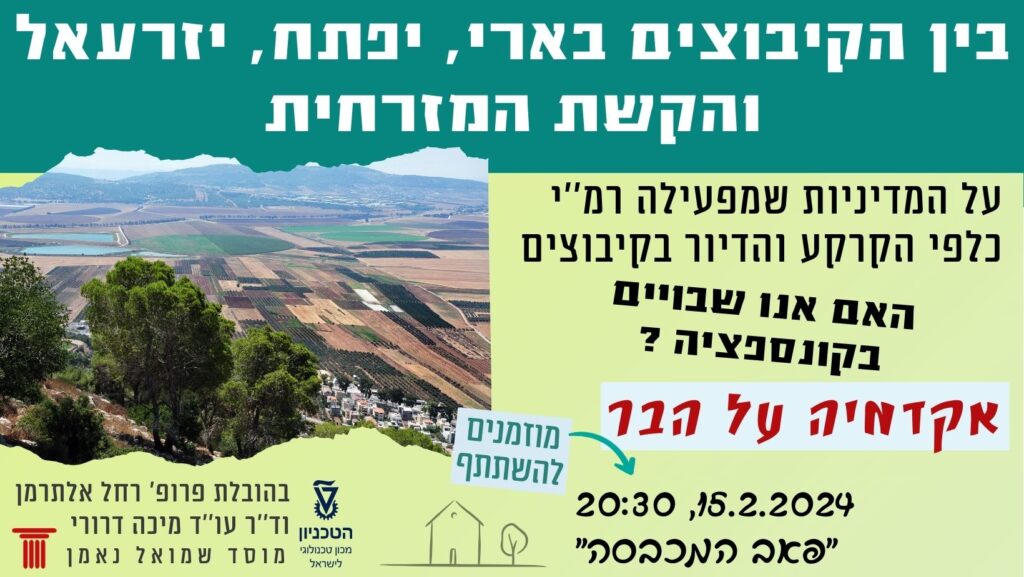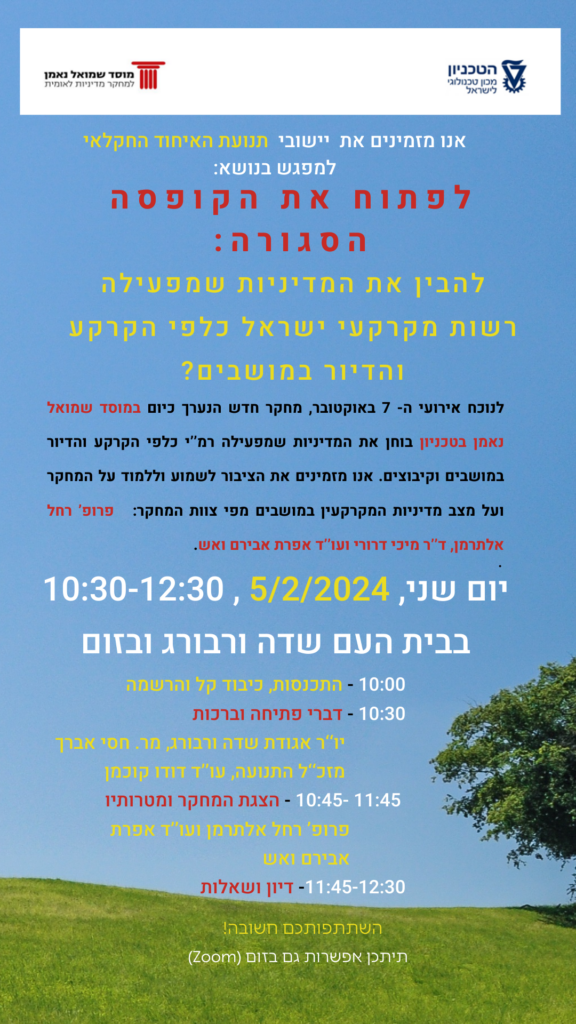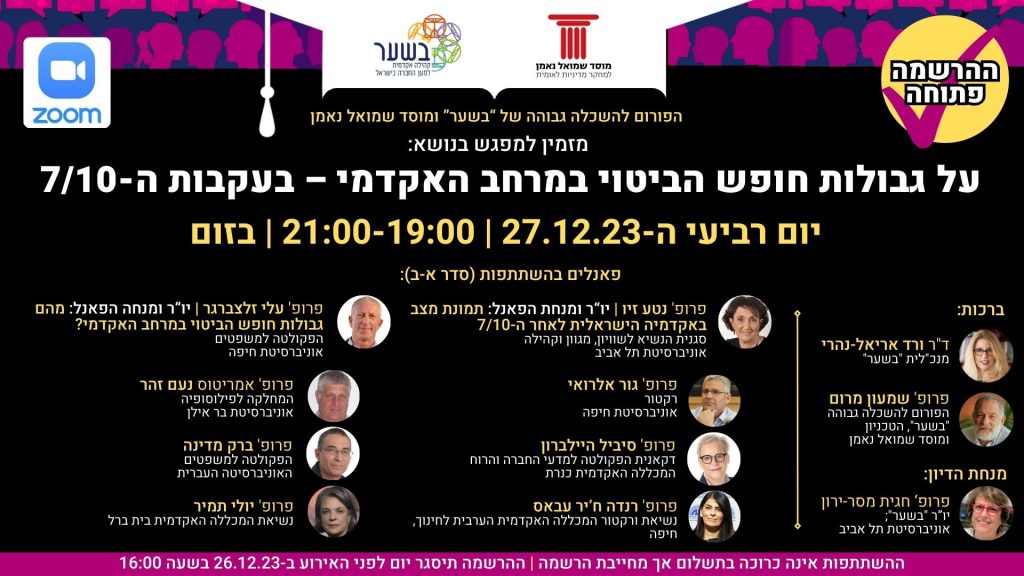The scientific infrastructure program of the Ministry of Science and Technology has been operating since 1995 in order to bridge the gap between basic academic research and applied development and aim to reduce the maturation time of applied technological ideas. The program provides research grants at a stage where it is difficult for researchers to obtain grants, between the basic academic research supported by VATAT and the Israel Science Foundation and the Authority of Innovation programs.
Over the years, the Samuel Neaman Institute has carried out three evaluations of the infrastructure program. The aim of the studies was to evaluate the short- and long- term effects of research and knowledge centers, which were funded by the Ministry of Science and Technology as part of the program.
The current study evaluated the program during 2005-2015. The study population included 827 researchers who participated in 287 studies and 25 knowledge centers.
The data collection included a questionnaire and personal interviews. The response rate was 79% (of at least one researcher per study).
In 74% of the studies, researchers continued their studies after completing their participation in the program. About half of the studies that continued were in the fields of life sciences, medicine, humanities and social sciences. About half of the researchers reported that the program helped in obtaining additional grants for research.
The highest output was publication of scientific papers on the results of the study (65% of the studies). Additional outputs: Development of additional laboratory infrastructure (36%), presentation of conference results (30%), creation of dialogue with industry (30%) and improvement of technologies / products or services (27%). In 38 studies, patent applications were filed (17%), 32 of which were patented. 14 companies were established, for which it can be said that the research in the framework of the infrastructure program contributed to their establishment.
The largest number of applications has been obtained in the fields of energy, materials and nanotechnology, cyber information and tele-communications, and life sciences and medicine.
Between 2015 and 2002, 25 knowledge centers were established within the framework of the infrastructure program. Responses to the research questionnaire were received from 22 researchers who participated in the establishment of 19 knowledge centers.
Of the 25 centers, we know that the activity continues in 18 of them. 4 ceased operations at the end of the financing period.
Outputs / contributions of knowledge centers: publication of articles (13 knowledge centers, 68%), creation of new infrastructure knowledge (13, 68%), improvement of technologies, products or services (12, 63%), commercial application (9, 47%). A company was established based on the activity of one of the knowledge centers.
The report includes recommendations for improving the program received from the researchers and scientific directors.












